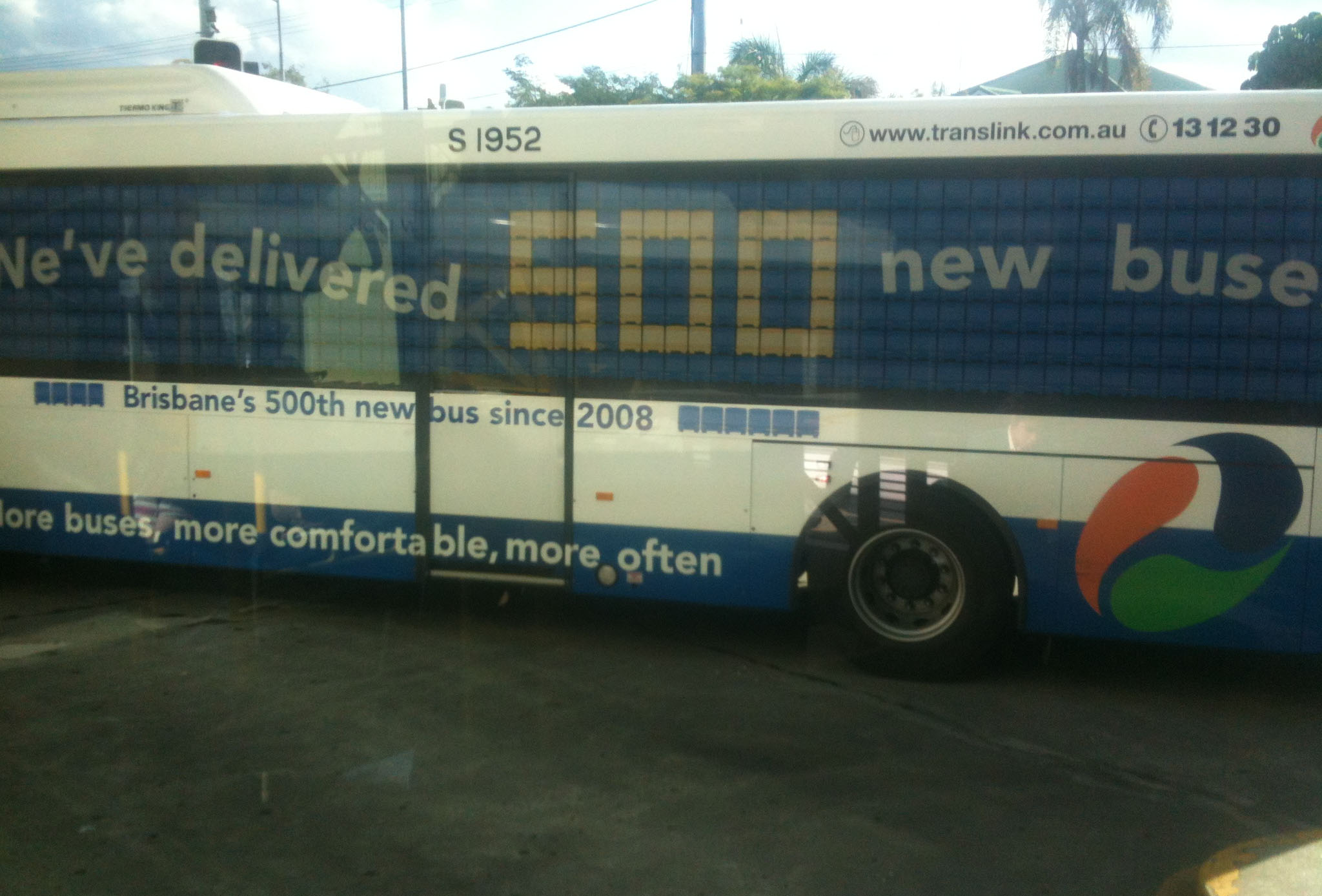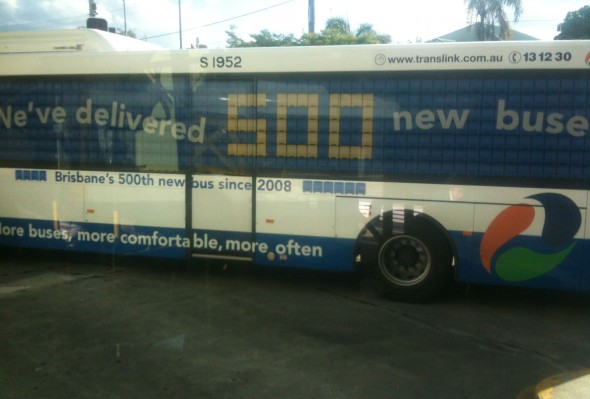
Costs and new roads means fewer catch the bus
Despite multiple improvements to Brisbane’s public transport network the number of people using the system is falling.

Despite new services and facilities less people are catching Brisbane public transport.
Despite multiple improvements to Brisbane’s public transport network the number of people using the service is dropping.
According to TransLink, which delivers bus, train and ferry services, information and ticketing across South East Queensland, patronage for the 2011/2012 financial year was 178.3 million public transport trips, down slightly from 178.6 million trips in 2010/2011.
Associate Professor Jago Dodson of the Urban Research Program at Griffith University suggests this decline in public transport use is down to a number of reasons.
“I think the overall economic situation is probably a factor, the level of growth that we’ve seen in the population in South East Queensland has started to flatten out somewhat, people are perhaps cutting out discretionary trips they might have previously undertaken by public transport, and we’ve seen the completion of major infrastructure projects that had previously impeded motor vehicle travel that had made public transport more attractive.
“Those factors probably lie behind some of the changes, but I wouldn’t discount the fact that there has been fairly substantial increases in the cost of public transport fares over the last couple of years, which likely also contributed to some change to passenger demand,” he says.
The previous financial year saw the fare increase by 15 per cent and commuters can expect a further 7.5 per cent increase at the beginning of 2013.
TransLink says: “The fare increase in January 2012 supported the funding for multiple improvements, with new services and facilities on the network including the new Northern Busway from the RBWH to Kedron. Currently, for every dollar that the consumer pays for public transport, the State Government contributes more than three. All fares collected are invested back into service improvements and better infrastructure.”
The introduction of TransLink in 2004 was a step forward for public transport in South East Queensland. It was the first time South East Queensland public transport services had been operated as a single unified network with a single unified ticket enabling seamless travel across the entire region by public transport.
However, according to Prof Dodson public transport operators and networks still have not got their heads around planning the network as a seamless unified entity and putting in place the institutional planning that needs to be there to ensure that they maximize the efficiency of the network.
“I think TransLink could have gone a step further to better integrate the network using those Public Transport Network Planning Principles that I’ve identified, better leveraging the high volume capacity on the heavy rail network to provide cross regional travel, and utilising the bus network in a more effective way to provide feeder services to that rail network.
“I think we’ve seen, especially in Brisbane, a large degree of competition between rail and bus, partly driven by the state government’s ambitions with the busway network. Avoiding that competition between buses and rail and ensuring they work co-operatively and support each other through using rail as a cross regional high speed service and buses as a feeder service probably would have been desirable under TransLink. Hopefully strategies of that type will continue to be considered and hopefully pursued,” Prof Dodson says.
While we have a less developed network than the larger metropolitan cities of Sydney and Melbourne, he says Brisbane has done a reasonable job in the management of public transport services over the last five to 10 years, operating them with greater efficiency and effectiveness.
In July the Queensland Government announced a review of the entire South East Queensland bus network.
TransLink says the review would look at savings and efficiencies, such as eliminating service duplication, simplifying the network, improving connectivity between services and modes and redirecting resources to routes where there is overcrowding.
Prof Dodson reckons Brisbane’s level of public transport use was approaching comparable levels in Melbourne, although we are not yet at the level of Sydney in terms of public transport use.
He says the introduction of the single electronic ticket via the Go Card was fairly successful, it had a few teething problems, not quite as easily implemented as the Perth SmartRider ticket but certainly far more effectively implemented than Melbourne’s Myki smart card.
“Sydney’s made a number of attempts to introduce a smart card and it’s typically failed…so we’re ahead on that front. There’s not a huge amount more we could expect to be doing that other cities aren’t. We are doing at least as good a job as other cities are in terms of provisions for public transport. There tends to be a great deal of focus on infrastructure expenditure as a means of solving public transport problems rather than on efficient planning responses which tend to be a lot cheaper, but that’s a problem that effects every Australian city.”
Cities in a number of European countries have taken a more strategic approach to public transport planning, putting measures in place to support public transport ahead of private motor vehicle use.
“As congestion increases on the roads they haven’t responded by increasing road capacity. Therefore, people leave their cars and decide to use public transport instead, so they’ve then focused on boosting up public transport services to provide an even better travel experience.”
Prof Dodson argues that South East Queensland has not taken that approach and that there has been a strategic decision to favour other modes than the private motor vehicle: “… but we tend to see attempts to expand public transport infrastructure provisions in conjunction with attempts to expand the provision of major road capacity with the result that we still see high levels of automobile dependence compared to some of those European cities which have taken an alternative approach. So although we are doing reasonably well from an Australian point of view, compared to many European cities we are actually doing fairly poorly.”
Photos by Tara Capel
